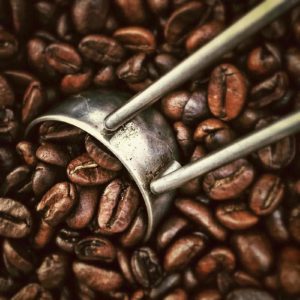By the time it has reached you, a coffee bean has undergone a long journey. It’s both traveled from where it was grown to your home and undergone a significant transformation from a green pit to the brown coffee bean you are familiar with. Here is a look at coffee’s journey from crop to cup: how it’s grown, processed, and roasted.
Coffee Cherries Grow on Shrubs
A coffee bean is actually the pit of a coffee cherry, which resembles a dark crimson cranberry when it’s ripe. Cherries grow on shrub-sized, deciduous coffee trees. Most commercial growers prune their trees annually to less than eight feet tall, as this makes it easy to pick the cherries off of the trees. The trees are usually pruned way back about every 10 years, in order to maintain their productivity.
When cherries are ripe, which is at about five to six months, they are picked. Because the cherries’ ripeness at the time of picking significantly affects a coffee’s quality, machinery is not used to pick arabica beans. Instead, workers will go over the same trees multiple times, picking the ripe cherries each time they pass over.
Processing Involves Removing the Bean from the Fruit
Shortly after it is picked, the coffee is processed. There are several processing methods, but they all remove the pit, or bean, from the cherry, or fruit, and dry the bean. The three main processing methods are:
- dry processing (also unwashed or natural processing), in which the cherries are dried before the beans are removed from them
- wet processing (also fully washed), in which the bean is first removed from the cherry and then dried
- semi-dry processing (also semi-washed or wet-hulled), which combines the two other processing methods
The way a specific coffee is processed will depend on where it is grown and what resources (e.g. electricity and machinery) the farmer has access to.
Roasting Coffee Brings the Beans to 400°F and Higher
In the roasting process, green coffee beans turn brown as they are heated to internal temperatures of 400°F and higher. Before the roasting process is started, the coffee beans look green. Throughout the roasting stage, they first turn yellow and then brown. As they continue to be roasted, they become darker and darker brown. By the time a roast is completed, the beans may have reached an internal temperature anywhere from 400°F to 500°F. (At Driftaway Coffee, we never reach 500°F, but some companies offer extremely dark roasts that have reached this temperature.)
The next time you have a cup of coffee, take a moment to think about all the work that has gone into that cup. From growing, to processing, to roasting, and to brewing, many people have been involved along the way. A great cup of coffee is the final product of a team effort all along the way.


